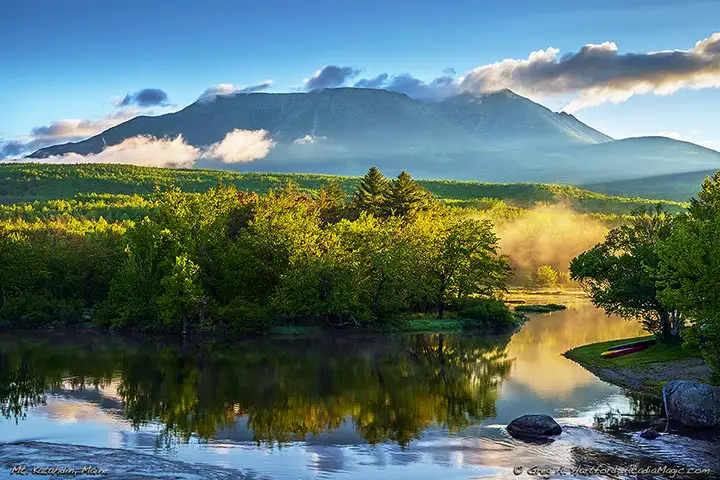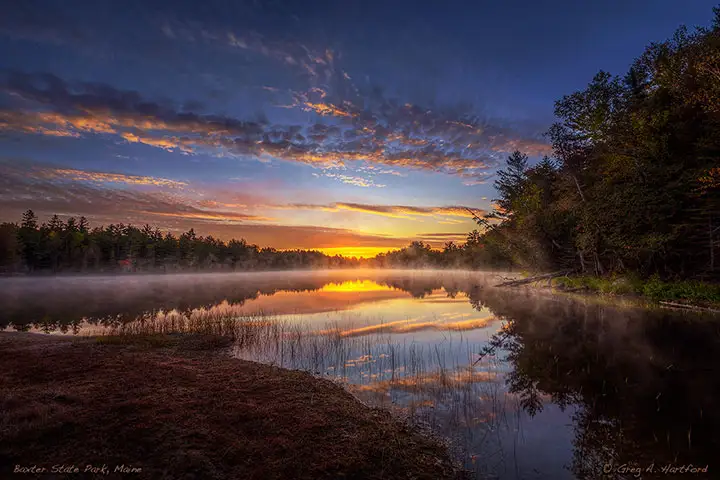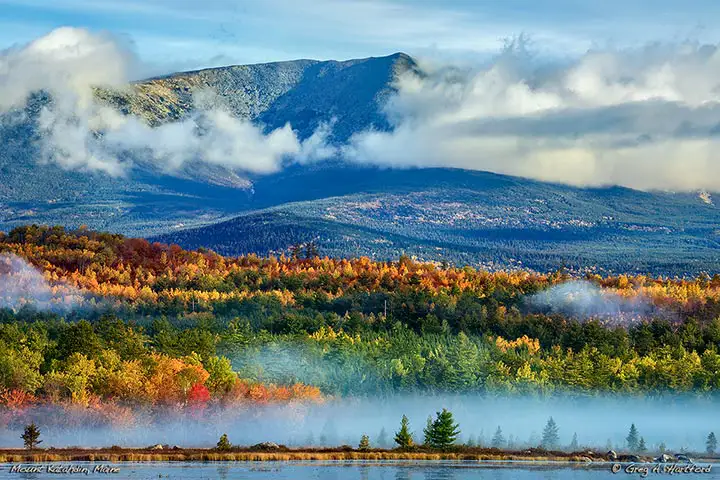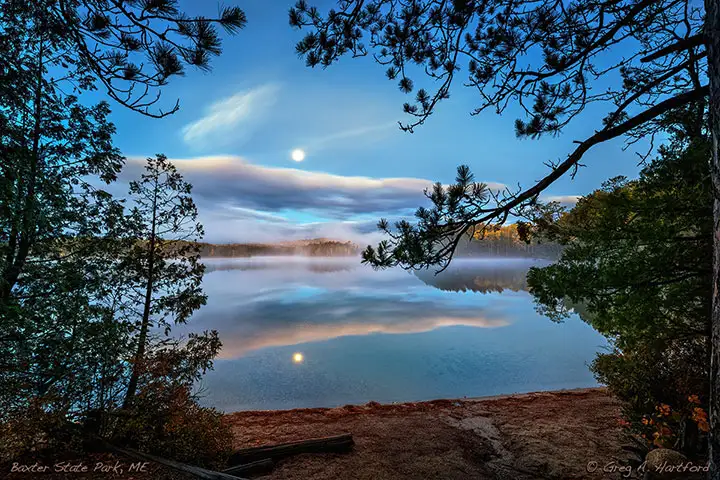Mount Katahdin & Baxter State Park
Dexter, Maine is ideally located in the central part of the state at the 45th Parallel and only about 14 miles from the I-95 corridor. This makes it convenient for visiting many of the most notable places. To the north is Baxter State Park and Mount Katahdin, Maine's highest mountain at 5,268 feet (1,606 meters). It is also the terminus of the Appalachian Trail which begins about 2,200 miles to the southwest in the State of Georgia on Springer Mountain. The nearest population center is southwest of the mountain in Millinocket, a once thriving paper mill town. Today it is known for being the gateway to Mount Katahdin, the West Branch of the Penobscot River, and the many outdoor recreation spots.
GPS of Mount Katahdin: 45.9042845, -68.9213562
A Top Rated Hike in the World
In 2015, National Geographic published a list of the 10 top hikes in the world. Mount Katahdin was number 2 largely due to the unspoiled beauty, its connection to the Maine people and how many have been inspired by it. Most notably is Henry David Thoreau who attempted a climb in 1846. Thoreau immortalized his passion for the wilderness and forests of Maine in his famous book called "The Maine Woods." Here is a preview: “Only daring and insolent men, perchance, go there.” “the mission of men there seems to be, like so many busy demons, to drive the forest out of the country.” “The spruce and cedar on its shores, hung with gray lichens, looked at a distance like the ghosts of trees. Ducks were sailing here and there on its surface, and a solitary loon, like a more living wave, — a vital spot on the lake's surface, — laughed and frolicked, and showed its straight leg, for our amusement.”
Baxter State Park
Baxter State Park was realized due to the passion of Percival P. Baxter for the Maine wilderness and his desire to protect its wildlife. After serving as Maine Governor from 1921-1924, his focus turned to creating a new state park. In 1930, he purchased almost 6,000 acres of land, including Mount Katahdin. The following year, he donated the whole parcel to the State of Maine with a stipulation. The land must be kept “forever wild.”
“Man is born to die, his works are short-lived. Buildings crumble, monuments decay, wealth vanishes. But Katahdin in all its glory, forever shall remain the mountain of the people of Maine.”
“…shall forever be retained and used for state forest, public park and recreational purposes…shall forever be kept and remain in the natural wild state…shall forever be kept and remain as a sanctuary for beasts and birds.”
Forces that Created Mount Katahdin
Mount Katahdin is referred to as a “Laccolith”. Visualize several different layers of sedimentary rock with the hot molten magma way below that is under tremendous pressure. Now imagine that one of the lower layers had a rupture or weak point where the magma was pushed upward, widening the break or crack. This is called an “intrusion”. As more magma is forced upward, the pressure can increase to the point where it suddenly breaks the surface becoming a volcano. However, in a Laccolith, there is not enough pressure to force the magma through the top sedimentary layers of the earth's crust but still enough pressure to cause the upper layers to bulge upward while the magma spreads horizontally between two layers. This bulge, or dome-like structure, is the Laccolith that is then shaped by the normal geological forces such as erosion to become what we know as a mountain.
Vision & the Responsibility
I appreciate the vision that Percival P. Baxter had of the Maine wilderness and its wildlife. I especially like the concept of Katahdin being the People's Mountain. Yet, with this ownership comes a responsibility to preserve and protect. It is true in most aspects of life that we often do not realize what we've got until it is gone. We currently are at a crucial tipping point in the balance of forces on earth that are already dramatically impacting all life that resides here. We can no longer continue with the status quo whose primary concern is profit no matter how temporary that may be. As a species, we have often proven ourselves to be selfish, shortsighted, and wasteful beyond measure. Given the option to choose a better way, we often fall backwards into the irretrievable abyss. Once in a generation or longer, a visionary with the clarity of conscience will make a stand to do what they can to point us in the right direction. Percival P. Baxter was one of these people. It reminds me of the great reverence that the Native Americans had for the earth. We should have learned more from them. Perhaps, there is still time.
Resources
- Encyclopedia Britannica
www.britannica.com - Baxter State Park: baxterstatepark.org
- Wikipedia: en.wikipedia.org/wiki/Mount_Katahdin
- Millinocket, Maine History: millinocket.org
- Distance between Dexter and Millinocket: 65.3 miles via Route 11 North, 72 miles via Route 11 & 11A North, or 78.6 miles via I-95 North
Maine's Majestic Mount Katahdin
The Katahdin name came from an Abenaki Indian word for “main mountain.” I recall a story of some explorers going through a thick rain forest on their way to a distant mountain. They asked an indigenous tribal member to help them find their way. Upon reaching the mountain, they climbed through the tree growth to higher elevations until they had an unobstructed view of the valleys far below. But something unexpected happened with the native guide. When he looked downward and saw what appeared to be tiny cattle, he became petrified as if it was some form of dark magic and ran away in terror. You see, having spent his whole life in the dense forest where everything was close without any wide open spaces, he had never developed depth perception. In a real sense, this is what happened to our culture, our species. We could not see the forest for the trees. We were so consumed by individual survival in a world that was being created by us alone that we lost track of the importance of the natural one and what was necessary to maintain its vital balance, health, and survival. We are at a stage much like someone driving down a mountainous road only to discover that the breaks are gone.
Natural geological features like Mount Katahdin offer us a way to gain a new perspective. It can change our point of reference and observation point. This is a good thing. But only if we learn to balance it with a sense of reference and responsibility.



